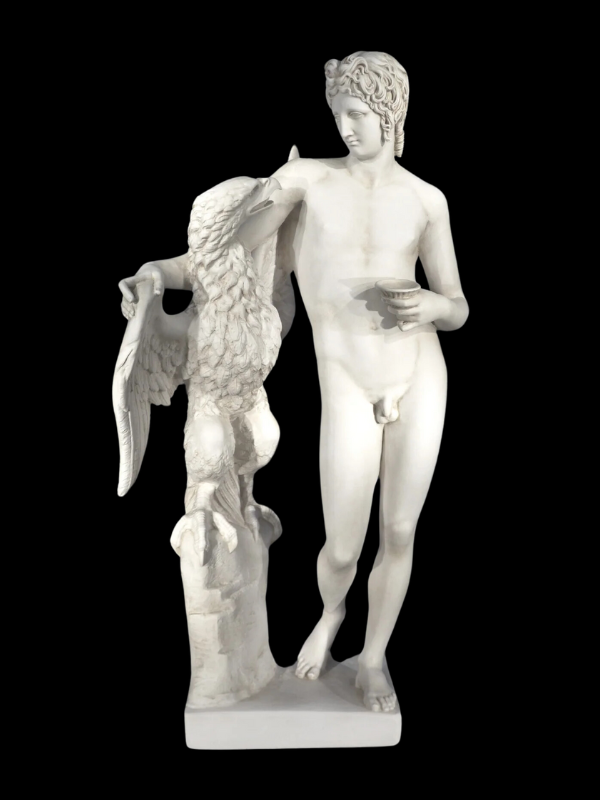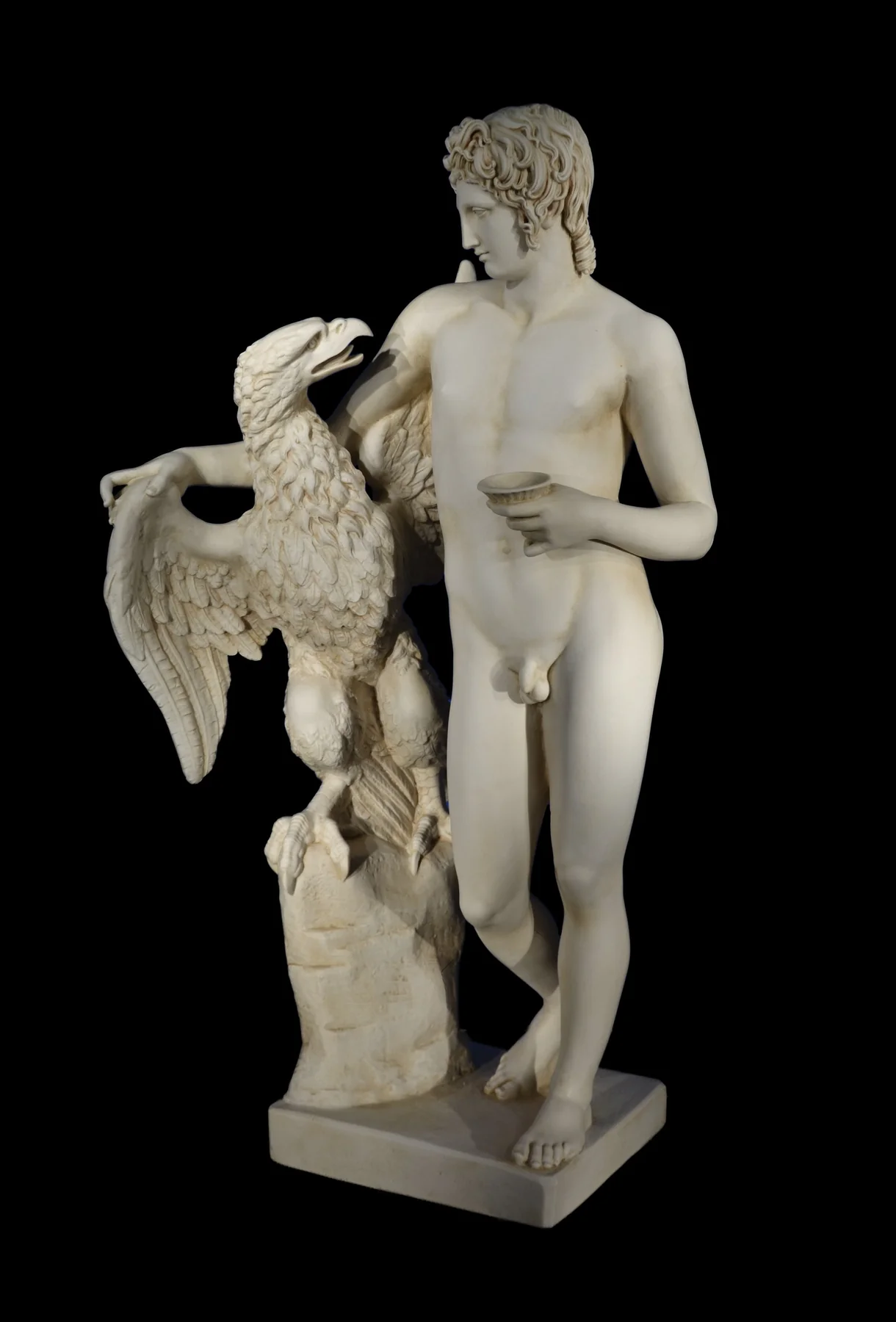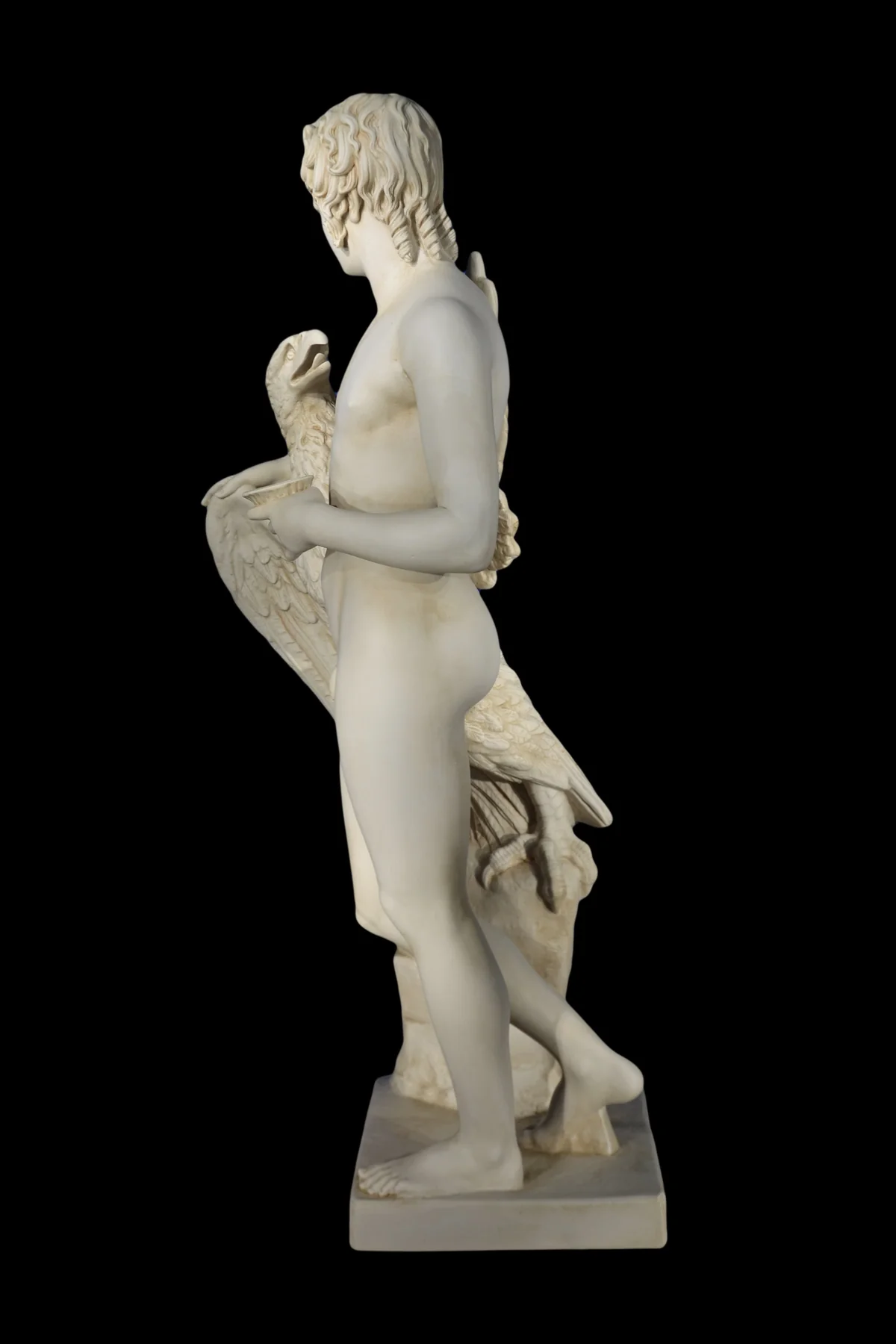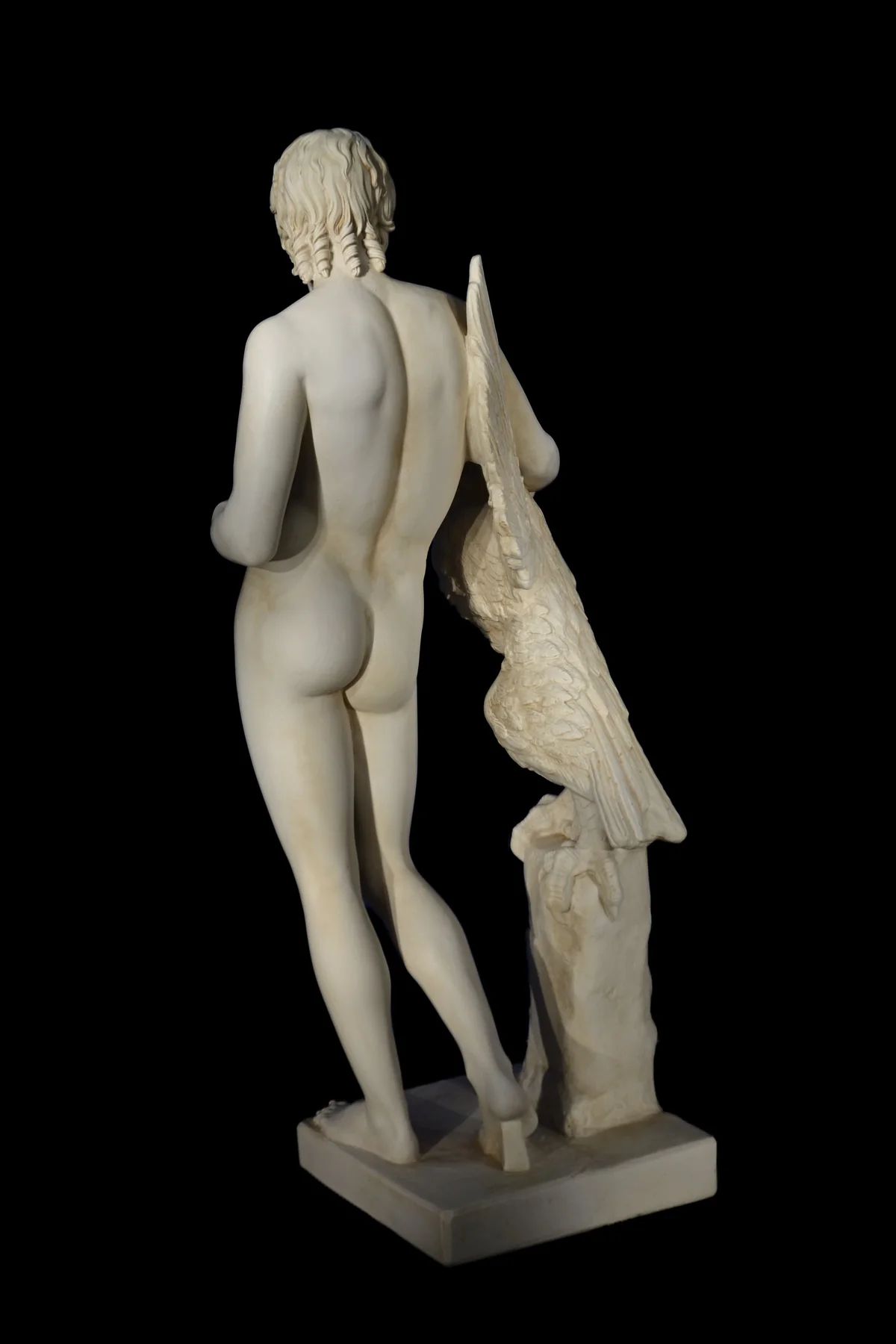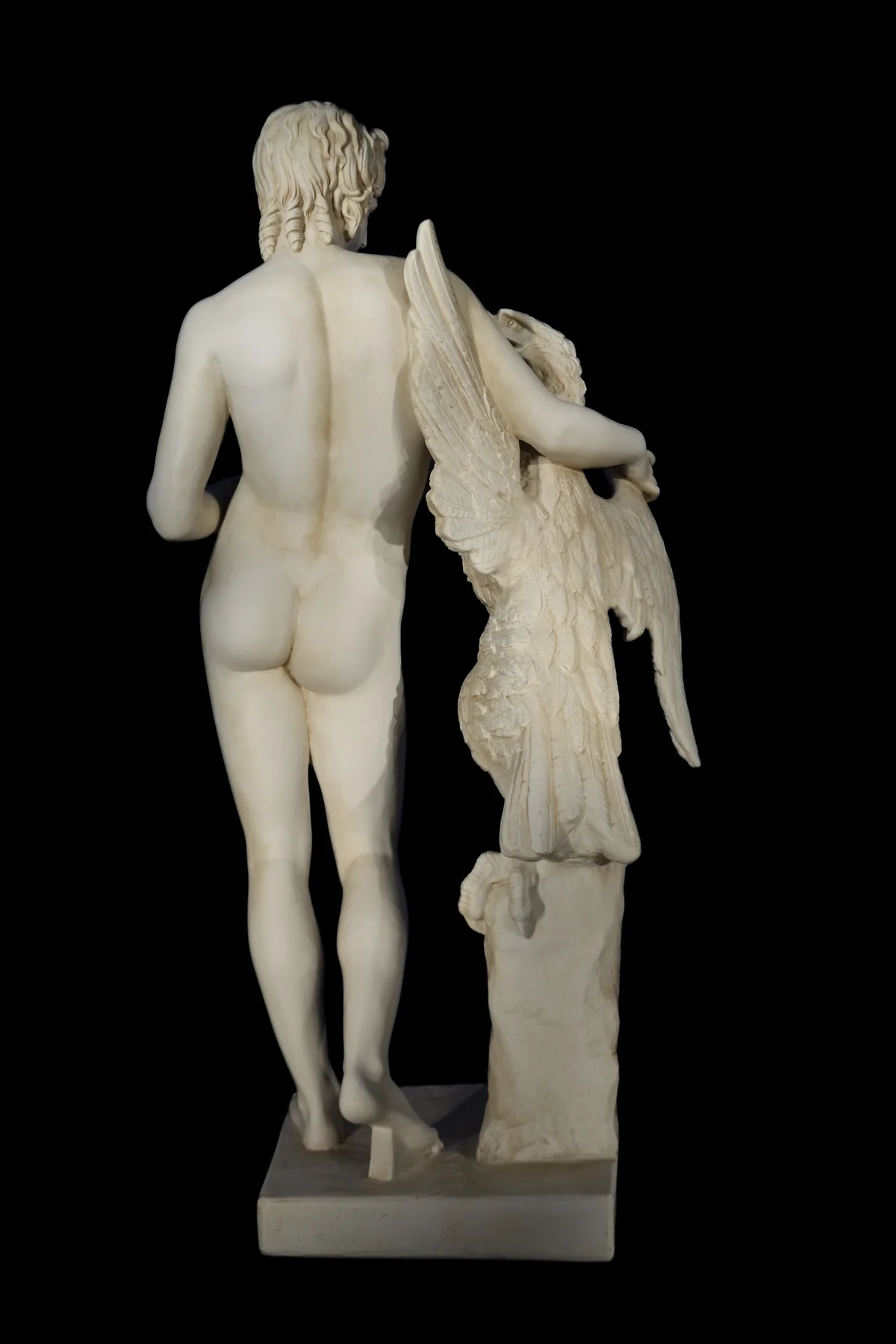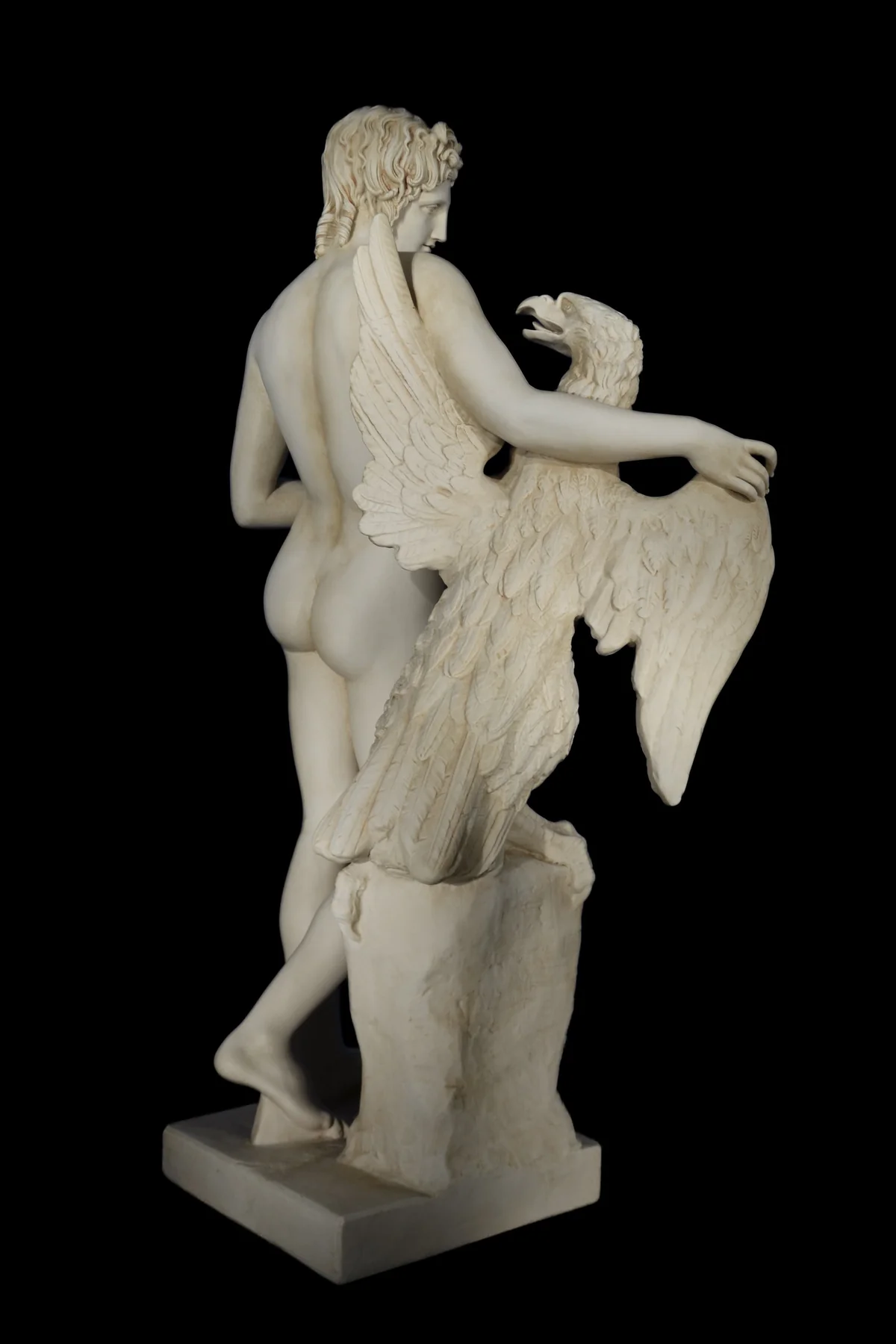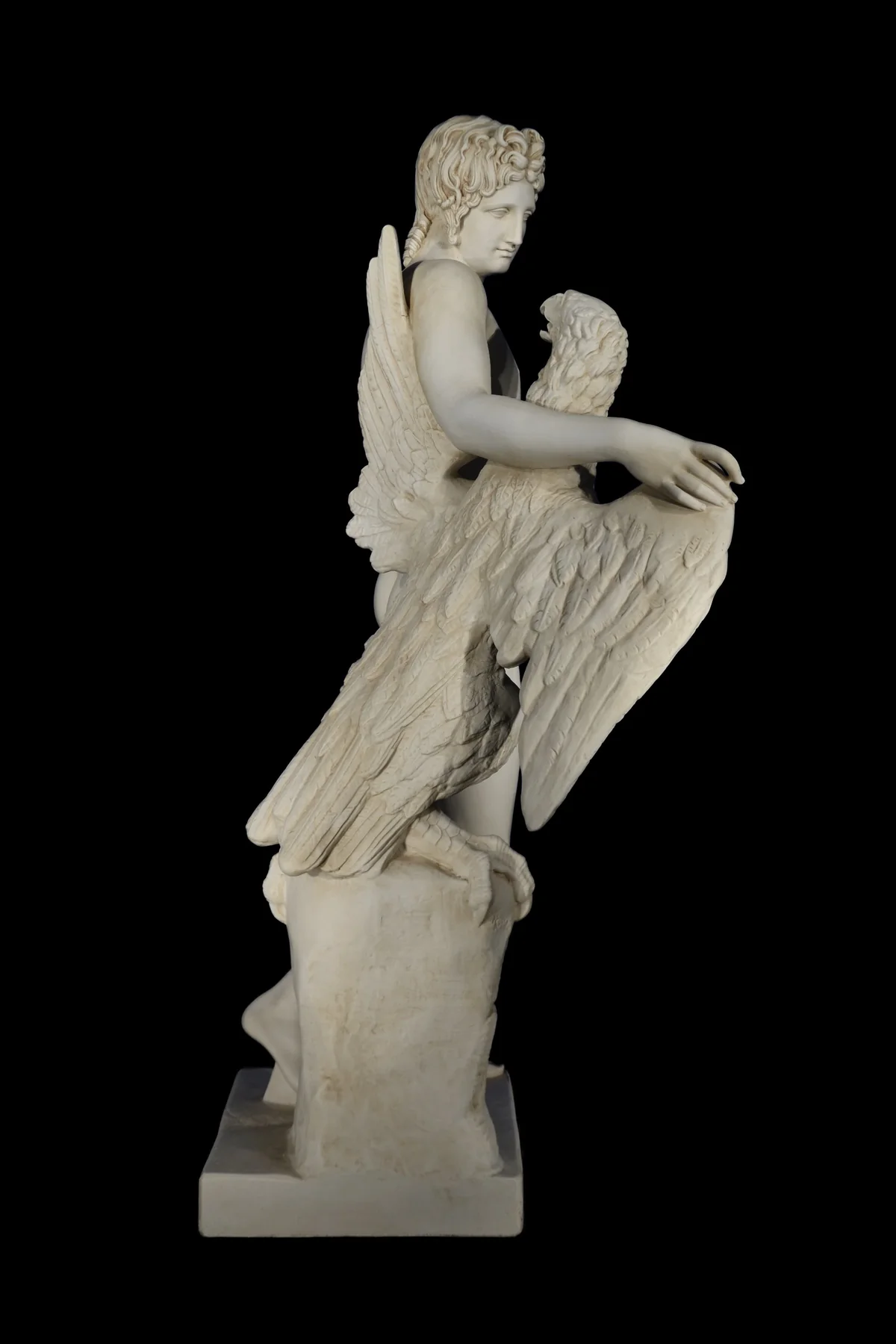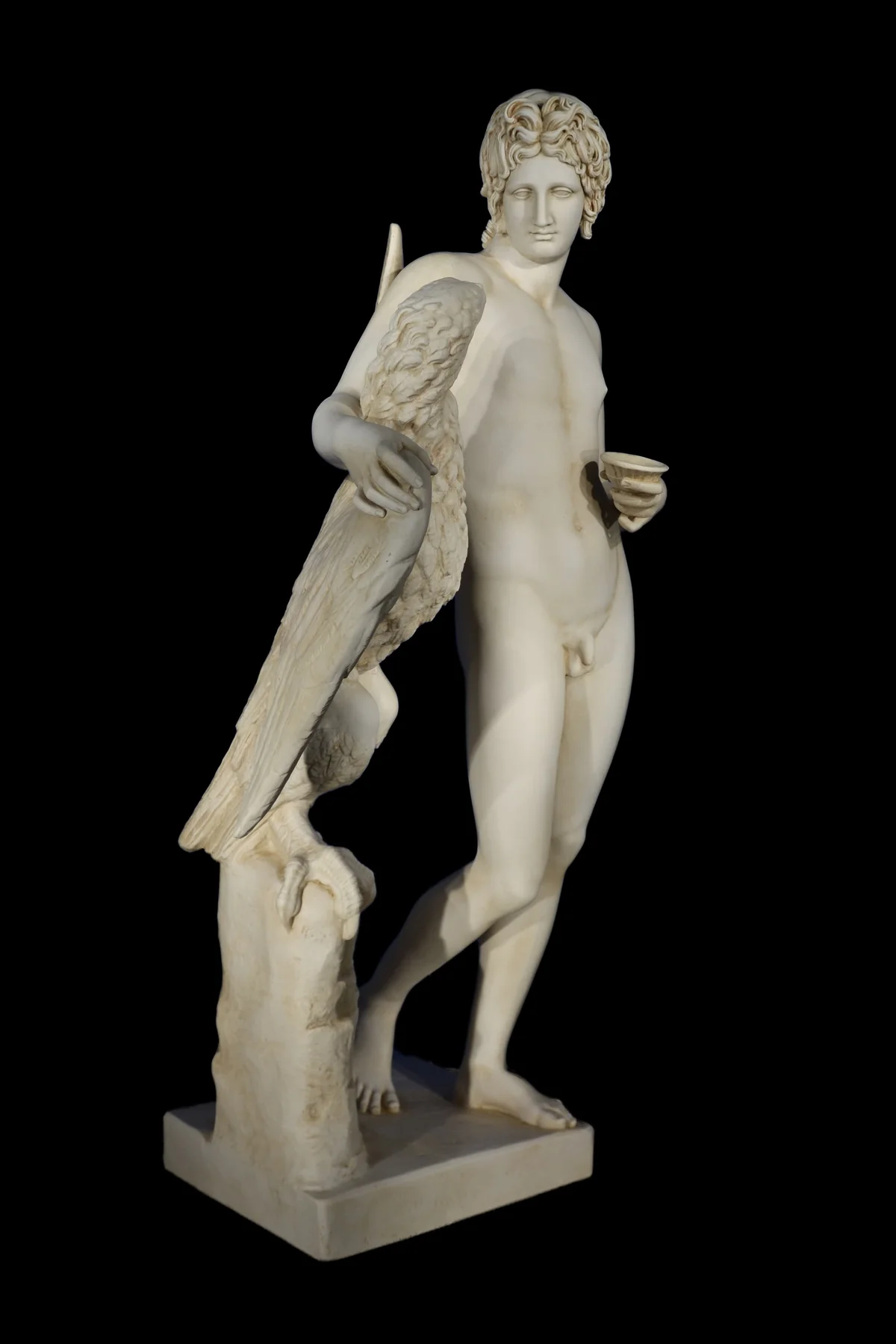Ganymede Life Size Statue
Ganymede Life Size Statue
Our Life-size Ganymede Statue (185 cm) is an exquisite reproduction of a Neoclassical masterpiece that beautifully captures the mythological tale of Ganymede's abduction by Zeus. This iconic story from Greek mythology has inspired countless works of art over centuries, but the statue we present is a faithful replica of the famed version sculpted by a Spanish artist in 1804. Initially crafted in Paris and later sent to the King of Spain, this statue remains one of the jewels of the Royal Academy of San Fernando in Madrid, where it continues to be admired by art lovers and historians alike. With its exceptional level of detail, lifelike proportions, and dynamic sense of movement, this piece is not only a tribute to ancient mythology but also a testament to the artistic genius of its creator, who earned a gold medal at the prestigious Paris Salon of 1804 and received recognition from none other than Napoleon himself.
A Glimpse into the Myth of Ganymede and Zeus
The legend of Ganymede is one of the most enchanting stories from ancient Greek mythology, intertwining themes of divine love, beauty, and immortality. Ganymede, a mortal youth of extraordinary beauty, was a prince of Troy and the son of King Tros. According to the myth, Zeus, the king of the gods, was so taken by Ganymede's appearance that he decided to bring him to Mount Olympus to serve as his cupbearer.
In the most famous version of the myth, Zeus transforms into a majestic eagle to carry out the abduction. As the eagle, Zeus descends from the heavens, seizing Ganymede and lifting him into the sky, far above the mortal realm. This abduction, while forceful, is often interpreted as a symbol of Ganymede's transcendence from human to divine status. Once in Olympus, Ganymede is granted eternal youth and immortality, serving the gods by pouring nectar and wine at their feasts.
This myth, rich in symbolism, represents themes of divine love, the beauty of youth, and the favor of the gods. In ancient times, Ganymede was seen as a symbol of heavenly beauty and divine favor, and his story has been depicted in various forms of art, from pottery and paintings to sculptures.
The Artistic Journey: Crafting the Ganymede Statue
The reproduction of our Ganymede Life-size Statue meticulously follows the original Neoclassical work from 1804, embodying the style and craftsmanship that marked the era. Neoclassicism, a movement that emerged in the 18th century, was characterized by its admiration of the classical art and architecture of ancient Greece and Rome. Artists and sculptors of the time sought to revive the ideals of beauty, symmetry, and balance that were hallmarks of classical art, while also infusing their works with the emotional depth and drama that defined their era.
The original statue, created by a Spanish sculptor during his time in Paris, was a triumph of Neoclassical art. At the time, Paris was the epicenter of the art world, and the sculptor’s achievement in receiving a gold medal at the Paris Salon of 1804 was no small feat. The Salon was the official art exhibition of the Académie des Beaux-Arts in Paris, and winning an award there signified a high level of recognition and esteem.
Upon its completion, the statue was sent to the King of Spain, who later gifted it to the Royal Academy of San Fernando in Madrid. There, it was admired not only for its technical prowess but also for its emotional resonance, perfectly capturing the tender and dramatic moment of Ganymede’s abduction by Zeus in the form of an eagle. The work remains part of the Academy’s prestigious collection, continuing to inspire artists and scholars to this day.
Craftsmanship and Detailing
The creation of this life-size reproduction required immense dedication to detail and craftsmanship, as the goal was to remain faithful to the original statue while also ensuring that the piece would resonate with modern audiences. Every aspect of the sculpture, from the lifelike rendering of Ganymede’s youthful form to the intricate detailing of the eagle’s feathers, has been meticulously recreated to reflect the skill and artistry of the Neoclassical period.
-
Material: The statue is crafted from high-quality marble composite, which provides the durability and strength necessary for a piece of this size while also maintaining the smooth, polished finish that is characteristic of classical sculpture. The use of marble composite also allows for the intricate detailing of the statue to stand out, from the soft contours of Ganymede’s skin to the powerful lines of the eagle’s wings.
-
Pose and Expression: The statue captures the moment just before Ganymede is lifted into the heavens. Ganymede is depicted in a dynamic pose, his body slightly contorted as he reacts to the eagle’s sudden grasp. His expression is one of surprise and awe, reflecting the suddenness of his divine encounter. The eagle, Zeus’s transformation, is rendered with powerful, outstretched wings, its talons gently yet firmly gripping Ganymede’s torso. The juxtaposition of Ganymede’s delicate, youthful form with the eagle’s raw power creates a sense of tension and movement, drawing the viewer into the drama of the scene.
-
Intricate Details: One of the most striking aspects of the statue is the level of detail that has been achieved in the rendering of the eagle. Each feather is individually sculpted, with variations in texture and depth that give the bird a lifelike appearance. The sharpness of its beak and the intensity of its gaze convey a sense of purpose and strength, reminding the viewer of the divine power that the eagle represents.
In contrast, Ganymede’s form is smooth and idealized, in keeping with the classical ideals of beauty and proportion. His youthful face is serene, and his body is depicted in the peak of youthful perfection, with every muscle and sinew carefully sculpted to reflect the Neoclassical obsession with anatomical accuracy.
Symbolism and Emotional Impact
The story of Ganymede’s abduction is one of passion, beauty, and divine intervention, and these themes are powerfully conveyed through the sculpture. Ganymede, as a symbol of youthful beauty and innocence, is contrasted with Zeus’s eagle, which represents power, authority, and the divine will. The tension between the two figures—one mortal, the other divine—creates a dynamic interplay of emotion and symbolism that has captivated viewers for centuries.
The statue invites the viewer to reflect on the nature of beauty and power, as well as the relationship between the human and the divine. Ganymede’s expression of awe and submission to the eagle’s grasp can be interpreted as a metaphor for the human experience of encountering the divine—an experience that is both terrifying and awe-inspiring.
At the same time, the statue’s graceful composition and idealized forms reflect the Neoclassical ideals of harmony and balance, suggesting that even in the midst of drama and tension, there is a sense of order and beauty that transcends the chaos of the moment.
A Masterpiece for Any Setting
At 185 cm (approximately 6 feet) in height, this life-size statue is an imposing yet elegant addition to any space. Whether displayed in a grand foyer, an art gallery, or an outdoor garden, the Ganymede Life-size Statue commands attention and adds a sense of classical beauty to its surroundings. Its timeless subject matter and exquisite craftsmanship make it a perfect centerpiece for any collection, whether you are a lover of classical mythology, a collector of fine art, or simply someone who appreciates the beauty of well-crafted sculpture.
This reproduction brings the grandeur and emotional power of the original Neoclassical work into the modern era, allowing contemporary audiences to experience the same sense of wonder and admiration that viewers in the early 19th century felt when they first encountered the statue. Whether you are familiar with the myth of Ganymede or simply drawn to the statue’s beauty, this piece is sure to be a conversation starter and a source of inspiration for years to come.
Type: Ancient Greek Decor, Greek Statue, Statue
